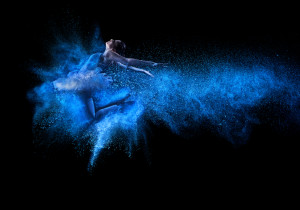It seems weird to refer to an “oral tradition” in relation to dance and movement. After all, isn’t dance a “nonverbal” art? And isn’t movement hard to talk about?
The answer is yes and no. Dance and movement are nonverbal and devilishly hard to capture in words. Consequently, dance and other movement arts have depended heavily on an “oral tradition” for transmission.

An analogy can be drawn to the oral tradition in music. It is possible to learn to play a song simply by hearing it – through oral, rather than written transmission. This is how people have had to learn to dance – by seeing another person dancing and trying it themselves.
The analogy ends here, of course, because there have been ways to notate music for centuries. This was not the case for dance.
In 1913, when Rudolf Laban gave up visual art to pursue a dancing career, dance was an artifact-poor art form. Because there was no way to record movement, masterful choreographies disappeared even as they were being performed. Perhaps as a consequence, very little had been written about dance – historically, aesthetically, or theoretically. With few records and little literature, dance seemed condemned to remain the “poor relation” of all the other arts.
A century later, the situation is very different. Now choreographies can be notated, videotaped, copyrighted, reconstructed, and even transmitted via the internet. A substantial dance literature exists and grows yearly. This progress is due in part to Laban’s vision, for he not only found a way to record movement in symbols; he also wrote extensively about dance and movement.
This literate tradition has been carried forward by Laban’s colleagues and students. In my new book, Meaning in Motion: Introducing Laban Movement Analysis, I honor this tradition in two ways.
First, the book incorporates not only biographies of Laban and Bartenieff, but also thumbnail sketches of many other significant notators and movement analysts. Secondly, annotated bibliographies provide a host of sources for additional study of Laban’s theories and their various applications.
While Meaning in Motion is a substantial introductory text, I hope that students will not feel that a single course covers all there is to learn about Laban and human movement. Laban never stopped. He was always observing, reflecting, theorizing. I hope that Meaning in Motion will encourage students to do the same.
